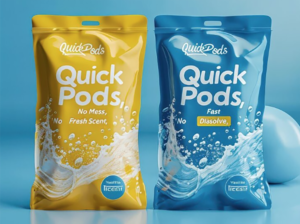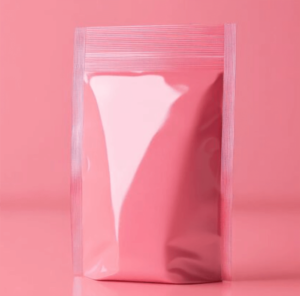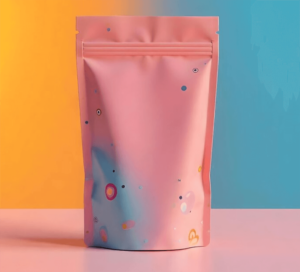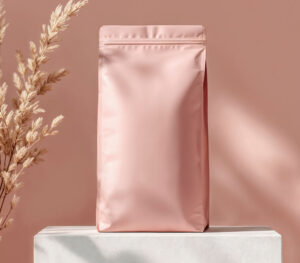The process and convenience of food packaging has an important impact on the consumer’s purchasing decision and experience, the following are some common packaging processes and their embodiment in the convenience:
Easy-open process
Tear Line: Setting up a tear line on the bag is a common easy-open process. By pre-cutting a weakened line on the packaging material, consumers can easily tear open the package along the tear line. This process is common in snack food bags such as chips and cookies, making it easy for consumers to open the package with one-handed operation.
Easy Tear Notch: Some packages are designed with a specialized easy tear notch, usually a small protruding notch or pull tab on the edge or top of the package. Consumers can use their fingers to grab the easy-tear opening and tear the package with force. Like instant noodle bags, sauce packets, etc. are often used in this design, even if the consumer has oil or water on their hands, but also easier to open the package.
Zipper seal: many food packages using zipper seal, such as part of the milk powder cans, snack bags, etc.. This packaging process is not only convenient for consumers to open for the first time, but also in the product is not used up can be re-sealed to maintain the freshness of the food and moisture resistance, easy to access multiple times.
Easy pouring and measuring process
Mouth design: Some liquid food or sauce packaging will adopt special mouth design, such as narrow mouth, slanting mouth or opening with a guide groove, which is convenient for consumers to control the speed and direction of pouring to avoid liquid splashing or excessive flow. The spout design of sauce bottles like ketchup and salad dressing allows consumers to easily squeeze the sauce onto food without waste.
Quantitative packaging: For some food products that require precise measurement, such as seasonings and health care products, quantitative packaging process will be used. For example, the packaging of seasonings such as salt and chicken essence will be designed in such a way that a fixed amount can be taken out each time it is pressed or torn open, making it easy for consumers to accurately control the amount they use without the need for an additional measuring device.
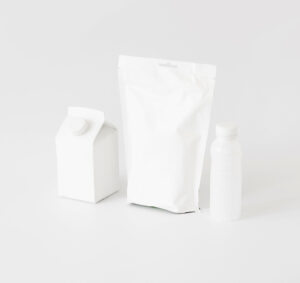
Preservation and protection process
Vacuum Packaging: By drawing out the air inside the package, the food is in a low-oxygen or even oxygen-free environment, which inhibits the growth of oxygen-demanding microorganisms and the oxidative reaction of the food, thus prolonging the shelf life of the food. Applicable to meat, cooked food, seafood, soy products and other perishable foods, can maintain the color, aroma, taste and nutrients of food, while reducing the volume of packaging, easy to store and transport.
Nitrogen-filled packaging: Nitrogen and other inert gases are filled into the package to replace the air and create a low-oxygen or oxygen-free environment, which can effectively inhibit the propagation of microorganisms and oxidization of food, and maintain the freshness and taste of food. Commonly used in potato chips, cookies, nuts and other casual food, but also can play a buffer role to prevent the food in the transportation process broken.
Modified Atmosphere Packaging (MAP): According to food characteristics and freshness requirements, the gas composition inside the package is precisely adjusted, usually by reducing the oxygen content and increasing the ratio of carbon dioxide and nitrogen. This process can more accurately control the gas environment around the food, inhibit the growth of microorganisms and enzyme activity, and slow down the deterioration process of the food, which is widely used in fresh meat, fruits and vegetables, and bakery products.
Moisture-proof packaging: Adopt packaging materials with good moisture-proof performance, such as aluminum foil, plastic film, etc., to prevent external moisture from entering the inside of the package, preventing the food from deteriorating, mildewing or softening due to moisture absorption. For some moisture-sensitive foods, such as cookies, candy, milk powder, etc., moisture-proof packaging is particularly important. Desiccant is usually added to the package to further reduce the humidity inside the package.
Light-proof packaging: Choose packaging materials that can effectively block light, such as dark glass, light-blocking plastic film, aluminum foil, etc., to prevent food from being exposed to light, which can lead to oxidation, discoloration, and nutrient loss. Like milk, fruit juice, edible oil and other food easily affected by light, often used to avoid light packaging.
Antimicrobial packaging: add antimicrobial agents in packaging materials, such as silver ions, chitosan, lysozyme, etc., or the use of its own antimicrobial properties of the material, can inhibit the growth and reproduction of microorganisms within the package, to extend the shelf life of the food. Can be used for a variety of foods susceptible to microbial contamination, such as meat, aquatic products, dairy products, etc.
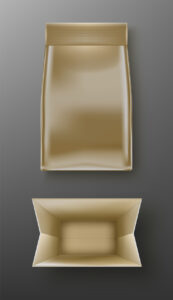
Active packaging: In addition to the basic packaging function, it can also interact positively with food or the external environment to extend the shelf life of food or improve food quality. For example, oxygen absorber can remove the residual oxygen inside the package; ethylene absorber can adsorb the ethylene gas released by fruits and vegetables to slow down their ripening and aging process.
Buffer packaging: for fragile or easily deformed food, such as eggs, pastries, chocolate, etc., the use of buffer packaging process. Usually in the package using foam, air cushion film, pulp molding and other cushioning materials, the food will be fixed in which to reduce the transportation and handling process of vibration and collision on the food damage.
Multi-layer composite packaging: Packaging materials with different properties are combined together through the composite process to form a packaging structure with multiple functions. For example, the outer layer of material to provide strength and wear resistance, the middle layer of material with good barrier properties, the inner layer of material is required to be non-toxic, hygienic, direct contact with food. This type of packaging can synthesize the advantages of various materials and effectively protect food quality.
Marking and information transfer process
Clear Printing: The text, patterns and logos on the package are printed in a clear printing process to ensure that consumers can easily read the relevant information about the food, such as production date, shelf life, ingredient lists, methods of use and so on. Clear printing not only facilitates consumers to understand the product information, but also helps them to recognize the authenticity and quality of the product.
Smart labels: With the development of science and technology, some food packaging has begun to use smart labeling technology, such as QR code, radio frequency identification (RFID) tags and so on. By scanning the QR code or using the corresponding identification device, consumers can obtain more detailed information about the food, such as product traceability information, nutritional composition analysis, cooking suggestions, etc., providing consumers with more convenience and services.

